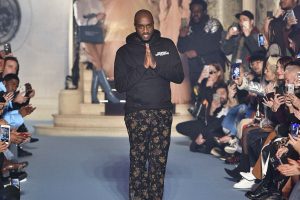
Gender fluidity is a concept that has been gaining momentum in recent years, and it has begun to have a major impact on the fashion industry. Gender fluidity refers to the idea that gender is not fixed or binary, but rather a fluid spectrum of identities that can change over time. This new perspective on gender has led to a major shift in the way that clothing and fashion are designed, marketed, and consumed.
In the past, the fashion industry was heavily focused on gendered clothing, with separate collections and lines for men and women. However, with the rise of gender fluidity, more and more designers are starting to create clothing that can be worn by anyone, regardless of their gender identity. This means that clothing is becoming less restrictive and more versatile, allowing people to express themselves in new and unique ways.
One of the key ways that gender fluidity is impacting the fashion industry is through the rise of “genderless” clothing. This refers to clothing that is designed to be worn by anyone, regardless of their gender identity. Many designers are now creating clothing that is not specifically tailored to either men or women, but rather is meant to be worn by all people. This has led to a new era of fashion in which people are free to express themselves in whatever way feels most authentic to them.
Another way that gender fluidity is impacting the fashion industry is through the rise of “unisex” clothing. This refers to clothing that is designed to be worn by both men and women, but which is not necessarily genderless. Unisex clothing is often designed to be worn in a more androgynous way, and it often features more gender-neutral cuts and silhouettes.
The rise of gender fluidity has also led to an increased focus on inclusivity in the fashion industry. Many designers are now creating clothing that caters to a wider range of body types, sizes, and abilities. This has led to a new era of fashion in which people of all shapes, sizes, and abilities are celebrated, rather than being excluded.
The movement of gender fluidity is also impacting how fashion is marketed, and how it is seen as a symbol. Brands are now trying to be more inclusive and sensitive to different gender identities and expressions. This changes the way the fashion is marketed and how it is perceived by the public. It shows how fashion is no longer just about the clothes themselves, but also about the message that they send, that everyone should have access to fashion and express themselves in their own way.
Additionally, Gender fluidity is also influencing the way that clothing is made. Many designers are now using sustainable and ethical production methods, as they understand that fashion is not just about the clothes themselves, but also about the impact that they have on the world.
Gender fluidity is having a major impact on the fashion industry. It is changing the way that clothing is designed, marketed, and consumed, leading to a new era of fashion in which people are free to express themselves in whatever way feels most authentic to them. It is also leading to increased inclusivity, and a new focus on sustainable and ethical production methods. Gender fluidity is no longer just a trend, but a movement that is impacting the fashion industry and society as a whole.
Overall, Gender fluidity is a movement that is impacting the fashion industry, and it is leading to a more inclusive and sustainable fashion for everyone. It is breaking down the traditional binary of men’s and women’s clothing and encouraging more creativity, self-expression and freedom in the industry. The fashion industry is becoming more conscious and aware of the impact they have on society, and they are using it to create an industry that is more accepting and respectful of different gender identities and expressions.



